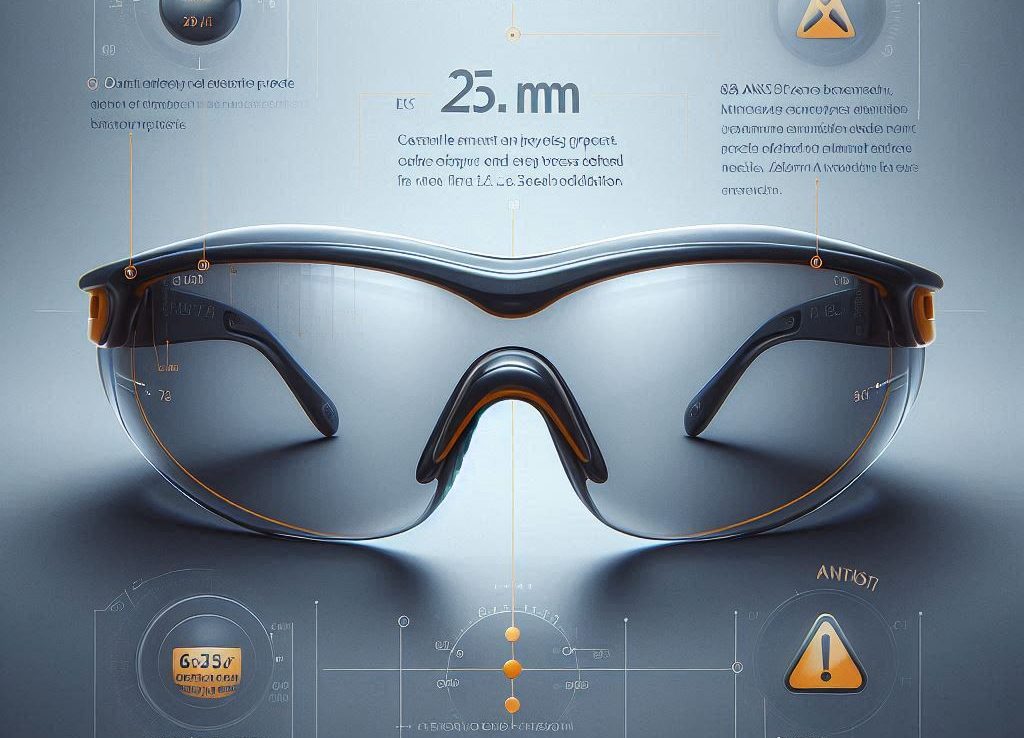When designing safety glasses or goggles, it is essential to comply with various standards and regulations to ensure adequate eye protection. Below are the minimum design requirements for safety glasses or goggles according to ANSI, ISO, and UAE safety regulations:
1. ANSI Z87.1 (American National Standards Institute)
- General Requirements:
- Safety glasses must be designed to protect against impact, dust, and harmful radiation.
- Impact Resistance:
- Lenses must withstand a minimum impact energy of 6.35 mm (0.25 in) steel ball dropped from a height of 1.3 meters (4.3 ft).
- Lens Design:
- Must provide a clear field of vision with no optical distortion.
- Anti-fog coatings are recommended to maintain visibility in humid environments.
- Side Protection:
- Safety glasses should have side shields or be designed to fit closely to the face to prevent lateral impact.
- Marking:
- Must be marked with the manufacturer’s name, the Z87.1 compliance, and any additional markings indicating specific protection levels (e.g., UV protection, anti-fog).
2. ISO 12312-1 (International Organization for Standardization)
- General Requirements:
- Eye protection devices must provide adequate protection against hazards and must be comfortable to wear.
- Optical Quality:
- Must comply with the optical quality requirements to ensure vision clarity.
- Mechanical Resistance:
- Must undergo tests for resistance to impact, with specific energy levels defined.
- UV Protection:
- Must provide protection against UV radiation, with minimum UV protection ratings specified.
- Comfort and Fit:
- Should include adjustable components to ensure a secure and comfortable fit for various users.
3. UAE Safety Regulations
- Compliance with International Standards:
- Safety glasses or goggles must conform to ANSI and ISO standards.
- Protection Level:
- Should be appropriate for the specific hazards present in the workplace (e.g., chemical splash, dust, flying particles).
- Marking and Labeling:
- Must include clear labels indicating compliance with applicable safety standards, manufacturer information, and usage instructions in both Arabic and English.
- Inspection and Maintenance:
- Users should inspect their safety eyewear regularly for scratches, cracks, or damage that could impair vision or protection.
- Training:
- Employees should be trained on the proper use, care, and limitations of safety glasses and goggles.
Summary
In summary, when designing safety glasses or goggles, ensure compliance with ANSI Z87.1, ISO 12312-1, and UAE safety regulations. Key requirements include impact resistance, optical clarity, UV protection, comfort, and proper labeling. Regular inspections and user training are essential to maintaining the effectiveness of the eyewear in providing adequate protection against hazards.

